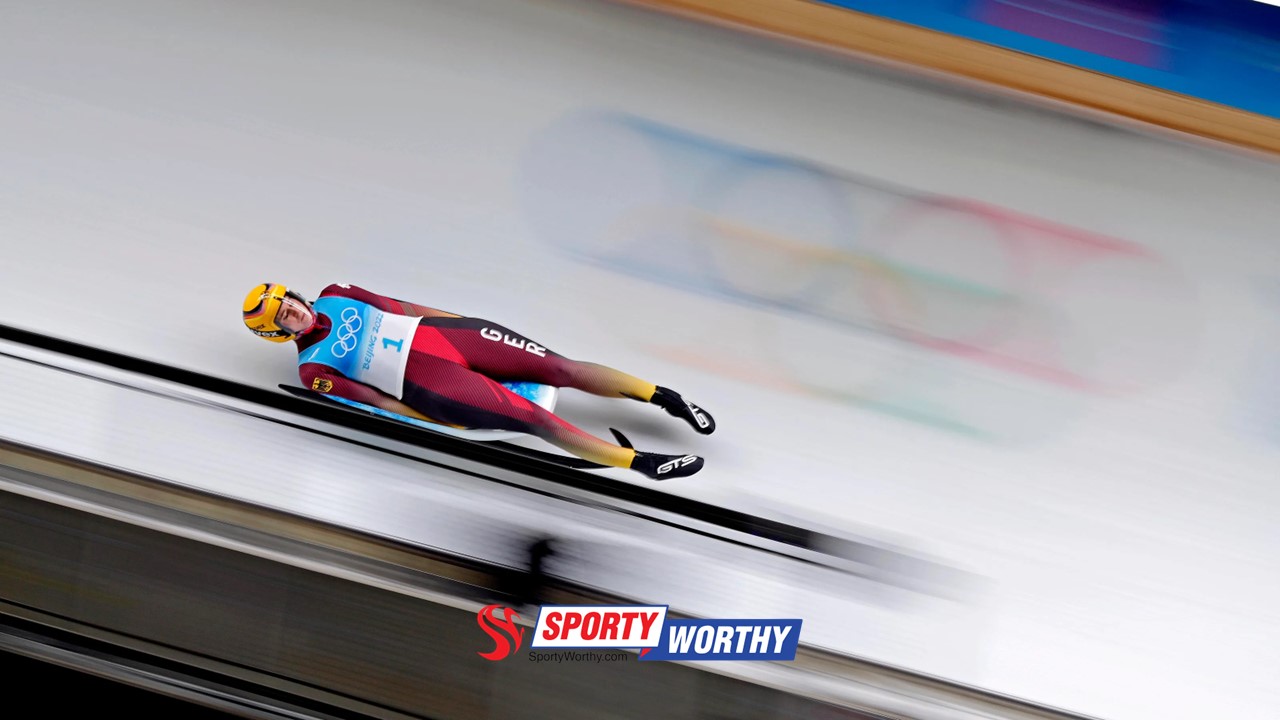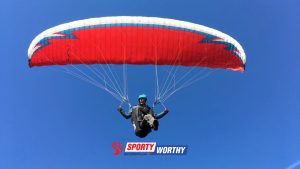Table of Contents
ToggleDid you know that the luge Olympic sport is one of the fastest and most thrilling winter sports, with athletes reaching speeds of up to 90 miles per hour? In this blog post, we will explore the exhilarating world of luge sports and provide all the information you need to understand how to play this high-speed, adrenaline-pumping sport. Whether you’re a beginner looking to learn the basics or a seasoned enthusiast seeking advanced tips, we’ve got you covered. Get ready to dive into the exciting luge world and discover what it takes to master this incredible Olympic sport.
What is Luge?
Luge is a high-speed winter sport that involves racing down an icy track while lying face-up on a small sled. It is an Olympic sport that demands exceptional skill, precision, and courage from its participants. Athletes propel themselves forward using their hands and feet to navigate the twists and turns of the track, reaching speeds of up to 90 miles per hour. Luge is renowned for its intense physical and mental demands on competitors, as split-second decisions and precise body movements are crucial for achieving maximum speed and control. The sport is often described as a thrilling and adrenaline-pumping experience, making it a captivating spectacle for both participants and spectators.
The equipment used in the luge Olympic sport includes a specially designed sled, known as a luge, made of durable materials such as fiberglass and steel. Athletes also wear protective gear, such as helmets, gloves, and specialized luge suits, to ensure their safety during high-speed descents. The history of luge as a competitive sport can be traced back to the 19th century in the Alpine region of Europe, where it originated as a form of transportation. Over time, luge evolved into a popular recreational activity and eventually transitioned into a competitive sport with standardized rules and regulations. Today, luge is an integral part of the Winter Olympics. It has gained a dedicated following worldwide, attracting athletes drawn to the exhilarating challenge of mastering the icy tracks and achieving top speeds in this unique and captivating sport.

1. Nurturing Your Passion for Luge Olympic Sport
If you have a passion for the exhilarating Olympic sport, you must nurture and develop your skills by seeking out local luge clubs or training facilities. Joining a luge community provides access to professional coaching and top-notch equipment and fosters a sense of camaraderie and support among fellow enthusiasts. By immersing yourself in a luge network, you can gain valuable insights, exchange tips, and even form lasting friendships with like-minded individuals who share your love for this thrilling sport.
Perseverance and dedication are paramount in pursuing the luge Olympic sport. Joining luge communities and networks can enhance your journey by providing a platform for sharing experiences, overcoming challenges, and celebrating achievements. Surrounding yourself with individuals who understand the dedication required to excel in luge can be incredibly motivating and inspiring. Through unwavering commitment and the support of your luge community, you can propel yourself towards achieving your goals in this high-speed, adrenaline-pumping sport.
2. Basic Techniques of Luge Olympic Sport
Luge is an exhilarating Olympic sport that demands precise body positioning and movements. Athletes lie on their backs with their feet stretched out in front of them, using subtle shifts in weight and slight adjustments in body position to maneuver the sled. The body must remain low to the ground to minimize air resistance and maximize speed, with the head and shoulders slightly raised to allow for effective steering and visibility of the track ahead. The legs play a crucial role in steering, as athletes use their calf muscles and feet to pressure the sled’s runners, guiding them through the twists and turns of the icy track.
Balance and steering are paramount in luge Olympic sport, as the slightest miscalculation can lead to disastrous consequences. Athletes must maintain a delicate equilibrium on the sled, adjusting their body weight to counteract the forces of gravity and centripetal acceleration. Additionally, precise steering is essential for navigating the challenging course, requiring split-second decisions to ensure the sled follows the optimal racing line. Speed and agility are essential for success in luge, as athletes hurtle down the icy track at mind-boggling velocities. The ability to react quickly to changes in the track and maintain control of the sled with lightning-fast reflexes is crucial for achieving top performance in this thrilling Olympic sport.
3. Training and Preparation for Luge Olympic Sport
Training and preparation for competing in the luge Olympic sport require a combination of rigorous physical and mental conditioning. Athletes must focus on developing strength, flexibility, and endurance to withstand the intense physical demands of luge racing. This involves a well-rounded training program that includes regular strength training, flexibility exercises, and cardiovascular workouts to enhance overall fitness levels. Additionally, mental training plays a crucial role in preparing for luge Olympic sport, as athletes must maintain focus, composure, and mental resilience to navigate the high-speed, high-pressure environment of competitive luge racing.
For beginners looking to start training for the luge Olympic sport, it’s essential to begin with a strong physical fitness foundation and gradually build skills specific to luge racing. This can involve starting with general strength and conditioning exercises, such as weight training, core workouts, and agility drills, before progressing to more specialized luge training techniques. Seeking guidance from experienced coaches and mentors can provide invaluable insights and support for newcomers to luge racing. Furthermore, understanding the technical aspects of the sport, such as sled control and racing strategies, is essential for aspiring luge athletes to develop a solid foundation for their training.
Proper nutrition and conditioning are paramount for athletes competing in the luge Olympic sport. Maintaining a well-balanced diet that provides the necessary fuel for training and recovery is crucial for sustaining peak performance. This includes consuming a mix of lean proteins, complex carbohydrates, healthy fats, and ample hydration to support the demands of intense luge training. Additionally, conditioning the body to withstand the high-impact nature of luge racing through targeted strength and flexibility exercises can help prevent injuries and enhance overall athletic performance in the luge Olympic sport.
Final Slide: Luge Olympic Sport
In conclusion, luge is an exhilarating sport that offers a thrilling combination of speed and skill. From its history and rules to the physical and mental demands it entails, this blog post has highlighted the key aspects of luge as an Olympic sport. Whether you’re seeking a new recreational activity or considering luge as a competitive pursuit, the adrenaline-pumping experience of hurtling down an icy track will surely captivate enthusiasts of all ages. For those eager to delve deeper into the world of luge, numerous resources and links are available to explore this captivating sport further, including training programs, equipment guides, and opportunities to experience luge firsthand. Don’t miss out on the chance to embrace the excitement and challenges of luge—it’s an experience like no other!








